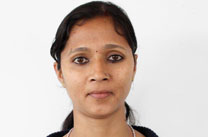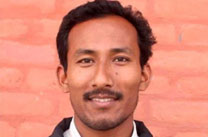
Rasuwa Diary: Micro Hydro Potential
By: Anju Pandit - 09 Aug 2016
Contrary to the loadshedding crisis faced in Nepal’s capital, Rasuwa has tremendous capability to generate and supply electricity for its inhabitants.

Changing Climate and Livelihood Options in Rasuwa
By: Anju Pandit and Aneel Piryani - 09 Aug 2016
Follow up to the micro-hydel story on Rasuwa, this post focuses on the impact of various climatic stressors that affect people in the region.

Local farmer to entrepreneur—adapting to change
By: Anju Pandit - 28 Jul 2016
A farmer uses trout farming as an innovative livelihood means to negotiate with climatic pressures. A picture from this blog was also featured in the ‘Adaptation Fund Photo Contest’.

Competition for spring water: Increase in land grabbing and private holding of springs in the mid-hills of the Gandaki River basin
By: Sangita Dandekhya - 28 Jun 2016
Springs are considered lifelines in the villages of the mid-hills of Nepal, as they are very important for survival: they are important sources of drinking water for humans and livestock, and they are used for irrigation, especially during the dry months.

Field visit for micro hydropower study in the upper Gandak River basin
By: Anju Pandit - 28 Jun 2016
ICIMOD’s Himalayan Adaptation, Water, and Resilience (HI-AWARE) initiative is implementing three work packages – knowledge generation, research into use, and strengthening of expertise in 12 study areas in the Indus, upper Ganga, Gandaki, and Teesta river basins.

Diverse livelihood means in Gatlang, Rasuwa
By: Bikram Manandhar - 28 Jun 2016
Agriculture is the main source of livelihood in Gatlang. The major crops grown include maize, finger millet, barley, buckwheat, potato, beans, black lentils, and vegetables. The current settlement and upper Gatlang are suitable for growing potatoes and beans whereas the lower lands are suitable for millet, barley, and maize.

Peoples’ Perceptions of Climate Change Impacts in Hakimpur Turra
By: Krity Shrestha, Practical Action - 11 May 2016
Hakimpur Turra is a small village of some 600-700 households in Uttarakhand. More than 60 percent of the villagers are farmers and around 20 percent are daily-wage labourers who work on others’ farms or at industries in Roorkee, the nearby city.

Our take on the HI-AWARE Academy
By: Ashmita Paudel, Sunam Pradhan and Sijal Pokharel - 11 May 2016
When we received an email from ICIMOD inviting us to join the Climate Change Adaptation Policy and Science (CCAPS) conference and the HI-AWARE Academy in Delhi and Dehradun from 24 February–5 March 2016, little did we know what to expect from the events. After corresponding, we learned that the conference dealt with bridging the gap between science and policy in terms of climate change.

Gendered Measures of Distance
By: Divya Sharma - 26 Apr 2016
Hakeempur Turra is a flood plain village. It sits on the bank of the Solani River, a tributary of the mighty Ganga. It was here that India’s first aqueduct was built in 1854. The village is close to the urban settlement of Bhagvanpur and, the educational hub of Roorkee. I happened to be a part of research group which visited Hakeempur Village recently as part of a HI-AWARE Academy field study.

No entitlement: Living on borrowed flood lands
04 Apr 2016
When our HI-AWARE research team visited the small Bihari village in early February, we found Chharke’s streets lined with bamboo cottages topped with thatched roofs. Outside, women and children loitered. Very few men were visible. The children, most in dirty clothes, carried their younger siblings.
